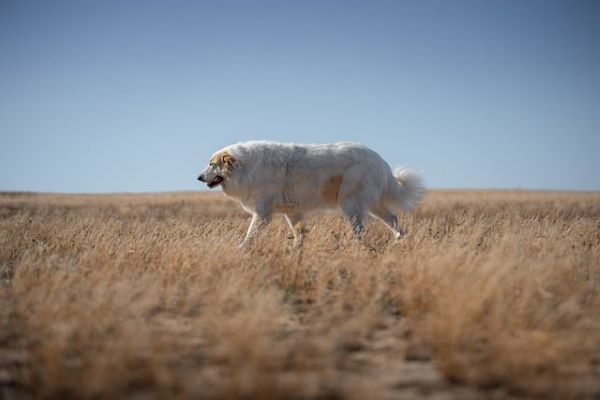Obesity in dogs is a growing concern, affecting millions of pets worldwide. Just like in humans, obesity can lead to a host of health problems, significantly decreasing a dog’s quality of life and lifespan. Defined as an excessive accumulation of body fat, obesity is not merely a cosmetic issue; it can have severe health implications, including diabetes, heart disease, and joint problems. Understanding the causes, symptoms, and preventive measures can help dog owners manage and prevent obesity in their pets.
How Obesity in Dogs Is Spread
Transmission
Unlike infectious diseases, obesity in dogs is not something that is spread from one animal to another. Instead, it is a condition that develops over time due to a combination of factors such as overfeeding, lack of exercise, and certain medical conditions. While obesity itself is not contagious, the habits and lifestyle choices that contribute to obesity can be influenced by the environment and the owner’s behavior. (Source)
Also, read: Everything You Wanted to Know about The Animal and Plant Health Association (APHA)
Symptoms of Obesity in Dogs
Obesity in dogs is often easy to identify, but the signs can sometimes be subtle until the condition becomes severe. Common symptoms include:
- Excessive weight gain: Noticeable increase in body weight beyond the ideal range for the breed and size.
- Difficulty breathing: Overweight dogs may pant excessively, even during mild activity.
- Lethargy: A lack of energy and reluctance to engage in physical activity.
- Difficulty moving: Obese dogs often have trouble climbing stairs, jumping, or even walking.
- Visible fat deposits: Fat accumulation, particularly around the abdomen, neck, and limbs.
- Inability to feel ribs: In a healthy dog, you should be able to feel the ribs easily under a thin layer of fat. In obese dogs, the ribs are often difficult to palpate. (Source)
Also, read: Now Know All about Heartworm in Dogs: Causes, Symptoms, Treatment, Vaccines, Prevention
Causes of Obesity in Dogs
Several factors contribute to the development of obesity in dogs:
- Overfeeding: Providing more calories than the dog needs is the primary cause of obesity.
- Lack of exercise: Sedentary lifestyles and lack of physical activity lead to weight gain.
- Breed predisposition: Some breeds, like Labradors and Beagles, are more prone to obesity.
- Age: Older dogs are more susceptible to weight gain due to a slower metabolism.
- Neutering/spaying: Hormonal changes after neutering or spaying can lead to an increased appetite.
- Medical conditions: Conditions such as hypothyroidism and Cushing’s disease can contribute to weight gain. (Source)
Who is Vulnerable?
While any dog can become obese, certain factors increase the risk:
- Breed: Certain breeds are genetically predisposed to gain weight easily.
- Age: Older dogs with a slower metabolism are more likely to gain weight.
- Neutered/spayed dogs: These dogs may have a higher tendency to gain weight due to hormonal changes.
- Dogs with limited mobility: Dogs with joint issues or injuries that limit movement are at a higher risk. (Source)
Potential Problems and Complications
Obesity in dogs can lead to numerous health problems, many of which can be life-threatening:
- Diabetes: Obesity is a major risk factor for the development of diabetes in dogs.
- Heart disease: Excess weight puts strain on the heart, leading to cardiovascular issues.
- Joint problems: Obese dogs are more likely to suffer from arthritis and other joint issues.
- Respiratory problems: Overweight dogs often have difficulty breathing, especially during exercise.
- Reduced lifespan: Studies have shown that obese dogs have a shorter lifespan compared to their healthy-weight counterparts. (Source)
Also, watch web stories: Top 10 Animal Shelters in India
Treatment for Obesity in Dogs
Treating obesity in dogs requires a multi-faceted approach, including:
- Dietary changes: Reducing calorie intake by feeding a balanced, low-calorie diet.
- Exercise: Increasing physical activity with regular walks, playtime, and other forms of exercise.
- Veterinary guidance: Working with a veterinarian to develop a weight loss plan tailored to the dog’s needs.
- Monitoring progress: Regular weigh-ins and adjustments to the diet and exercise regimen as needed. (Source)
Prevention and How Humans Can Protect Their Dogs
Preventive Measures
Preventing obesity in dogs is much easier than treating it. Key preventive measures include:
- Portion control: Feeding the appropriate amount of food based on the dog’s age, weight, and activity level.
- Regular exercise: Ensuring the dog gets adequate physical activity every day.
- Healthy treats: Limiting treats and opting for low-calorie, nutritious options.
- Regular veterinary check-ups: Regular visits to the veterinarian to monitor the dog’s weight and overall health.
Expert Opinions
Global organizations like the World Small Animal Veterinary Association (WSAVA) emphasize the importance of maintaining a healthy weight in dogs. According to the Association for Pet Obesity Prevention (APOP), over 50% of dogs in the United States are overweight or obese, highlighting the need for awareness and proactive management.
Conclusion
Obesity in dogs is a serious health issue that requires immediate attention. By understanding the causes, symptoms, and preventive measures, dog owners can take proactive steps to ensure their pets maintain a healthy weight and live a long, happy life. Regular veterinary care, a balanced diet, and adequate exercise are the cornerstones of preventing and treating obesity in dogs.





